 |
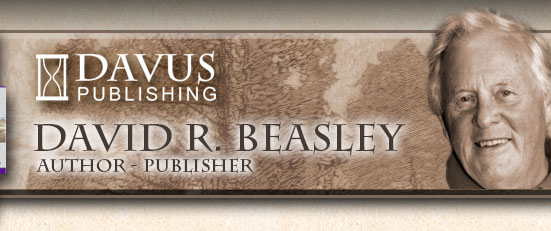 |
||
|
|
RICHARDSON'S WORKS Major John Richardson, 1796-1852, was Canada's first novelist and its most colorful. Richardson's Wacousta; or the Prophecy: A Tale of the Canada's (1832) has had many Bowlderized editions but the last two are complete, to wit, Carleton University Press (1987) and The Tecumseh Press (1998). Richardson's The Canadian Brothers; or, The Prophecy Fulfilled. A tale of the Late American War was published in full by Carleton University Press (1992). Richardson's Wacousta was rewritten by Heather Kirk, see www.heatherkirk.ca. Richardson's Hardscrabble; or, The Fall of Chicago and his Wau-nan-gee; or, The Massacre at Chicago may be found on the Internet.
|
||
|
Operations of the Army Under General Wolfe
ISBN: 978-0-915317-61-5 The importance to Canadian History of the description of the Battle of the Plains of Abraham and the subsequent battles between the French and British Armies in the French effort to win back Quebec was recognized by Major John Richardson who serialized it in his Kingston, Ontario newspaper, The Canadian Loyalist and Spirit of 1812 in 1844. Adjutant-General Richard Bullock wrote the article. He had fought alongside Richardson in the Right Division of the British Army in the War of 1812, which Richardson described in A Canadian Campaign. First published in the 1820s, A Canadian Campaign narrates Richardson’s experiences with the 41st Regiment from the Battle of Fort Detroit through the Battle of the Thames and his imprisonment in Kentucky. Recollections of the West Indies describes his military experience on Barbados and Grenada from 1816 to 1817 and his denunciation of slavery. In Search of Richardson’s Spain is David Beasley’s retracing of the march of the British Legion over the Cantabrica Mountains as described in Richardson’s Journal in 1835 — contrasting then to now.
|
|||
|
The Monk Knight of St. John
Rare novel by Canada's first novelist, Major John Richardson: Introduction by David Beasley
Author: Major John Richardson Major John Richardson, Canada's first novelist, was ranked among the best writers of the nineteenth century. His Wacousta, which told of the siege of Fort Detroit by Pontiac in 1763, went through many editions and was widely read in Great Britain and North America from its publication in 1832 well into the 20th century. He wrote The Monk Knight of St John in New York City in 1850; it became an underground best seller; it depicted the famous battle of Tiberias between the Crusading Knights and the Saracens against a background of amoral anarchy, and explored the ensuing passionate love-making begun in Palestine and carried on in Auvergne, France, in many and varied forms. A pattern of triangulated sexual relationships brings the protagonists into conflict and finally into resolution.
|
|||
|
|
Écarté; or The salons of Paris
Author: Major John Richardson Gambling, Paris during the restoration
The introduction is by David Beasley, who wrote the definitive biography of John Richardson, The Canadian Don Quixote. John Richardson had experienced war, hedonistic life in Regency England, and the soul-destroying attractions of the Paris gaming houses when he wrote this novel to bring realism to the English novel as Honoré de Blazac was doing in France.
|
||
|
Westbrook, the outlaw
or The Avenging Wolf
Author: Major John Richardson John Richardson's border tale, Westbrook, the Outlaw, was his last novel. Published a year after his death, which took place in New York City in May 1852, its loss for over a century and discovery in 1973 is told by David Beasley, Richardson's biographer, in the preface. Richardson, the first Canadian novelist, produced brilliant works, including the often reissued Wacousta, but he had to leave Canada for the United States to find publishers. The real Andrew Westbrook, a Canadian traitor during the War of 1812, led raiding parties of Americans up the Thames River Valley to burn mills and houses, and to kidnap the richer inhabitants to hold for ransom in the States. He was a tall, powerful, red-headed, rebellious person whom Richardson fictionalizes as a domestic tyrant, murderer, and rapist. Richardson recreates the time, the setting and the characters vividly, and, thereby, gives Canadians a rare and important picture of their past. The novel will be of particular interest to highschool and university students, first, for its vigorous recreation of an important period in Canada's past, and, second, for Richardson's literary talent which dominated Canadian writing for the first half of the nineteenth century and blazed the way for Canada's future novelists.
|
|||
|
|
Frascati's
Author: John Richardson and Justin Brennan Scenes in Paris; Confidence men; Paris during the restoration; Swindlers
The philosophical air and worldly satire of the novel are owing to Richardson's co-author, Justin Brenan from Dublin, Ireland, whom Richardson knew in Paris. Brenan studied philosophy and ancient languages as well as issuing many editions of a manual on English composition. The novel is not only a good read about the gambling vice that is endemic among Canadians today but an important contribution to the canon of Canadian literature. John Richardson lived in the Paris of the Restoration period, which he describes so well, from 1820 to 1827. Born in Upper Canada and experienced on the battlefields of the 1812 War as a boy, he led a life of danger and excitement, which David Beasley has described in his biography, The Canadian Don Quixote; the life and works of Major John Richardson, Canada's first novelist. Dr. Beasley has written the introduction to this brilliant and little-known novel..
|
||
|
Major John Richardson
Short stories Collected by David Beasley
Author: John Richardson Richardson was as interested in revealing love in its many aspects as he was in describing the characteristics of the North American Indian. Both his short stories and his novels are illustrative of this. "The Sunflower" (published in the November issue of Graham's Magazine, 1850) for example, tells of the love between a Saukie brave and a Saukie woman, Sunflower, which comes to an end when they encounter the white world. "Ampata!" (published in three issues of the Sunday Mercury in the Spring of 1852) describes the unrequited love of an Indian girl for the enemy, a British officer. "Captain Leslie" (Sunday Mercury, November 1851) portrays the love of an American nurse, Miss Clarendon, for a dying British officer against the background of the American War of Independence and the love of the Delaware Indian for his land now occupied by whites. "Criminal Love" (Sunday Mercury, November 1851) describes a courtroom in southern France where we as readers are forced to pass judgment on the crime of passion. In his brief essay "The North American Indians," which is included in this collection, Richardson makes two points which his Indian stories illustrate: the American Indian is indigenous to North America and did not migrate from Asia, as is commonly believed; and the Indian nations are as distinct in physique and language as are the European nations. "The North American Indians" was printed in the first issue of a weekly New York newspaper, Copway's American Indian (July 10, 1851) edited by George Copway, an Ojibway from Ontario. The same issue contains Richardson's essay "A Trip to Walpole Island and Port Sarnia," which he had published anonymously in the Literary Garland (Montreal, Jan. 9, 1849) and which later was reprinted by A.H.U. Colquhoun in 1924 in his Tecumseh and Richardson. Richardson did not again contribute to the newspaper despite the promise in his essay to continue writing about the Indian. Perhaps exception was taken to his views and pressure put upon the editor to employ non-controversial writers thereafter. This surmise is substantiated by the fact that the first issue only, which was written entirely by Richardson, gained any attention in the form of high praise by the prominent journalist Julie de Marguerittes in the following issue. The essay also reveals, as do his other writings, Richardson's sense of fatalism about Indians, that they and the wilderness were doomed for destruction; and Richardson's belief in the superior characteristics of the Indian over other races, namely his better sense of order, his finer sensibility, and his lack of hypocrisy. For example, whereas this essay asserts the Indian's superior intelligence over the blacks, his other essay, "A Trip to Walpole Island and Port Sarnia" suggests the Indian's superiority over the whites. Such a stand today would brand Richardson as racist. However, it is necessary to note that in his day, although the abolitionists regarded the enslavement of blacks as criminal, they condoned the merciless pursuit and slaughter of Indians.
|
|||
 |
|
||
© 2010 Davus Publishing - All Rights Reserved - Terms & Conditions |

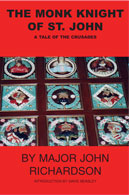
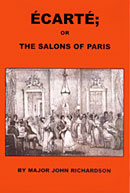
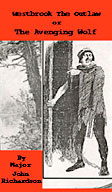
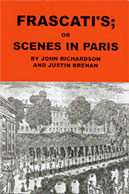
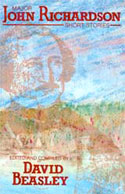
 Davus Publishing books can be purchased on-line
Davus Publishing books can be purchased on-line